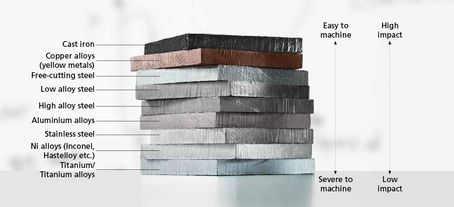A gaze into the world of cutting fluids
This FUCHS blog is a gaze into the fascinating world of microbiology, one of the weapons in the battle against bacteria that spoil a cutting fluid’s properties. But also into innovative cutting fluids and their key role in making medical implants.

MEDICAL DEVICES – A FAST-GROWING INDUSTRY
Demand for medical implants is on the increase, primarily because we are living longer and the population is increasing rapidly. But growth in the industry would not have been possible without modern specialised production technology. And this is where we come in.
SOPHISTICATED ENGINEERING
Cutting fluids used in the medical devices sector are subject to some tough requirements. Alongside stainless steel, the industry increasingly uses titanium and cobalt alloys in the production of implants. These are materials with superior strength, but they also complicate the chip-forming processes in production.
To meet the challenges of this kind of hard-to-machine material, we take customers’ specific requirements into the lab and develop unique solutions for each process or application. You can read more in this article.

MICROBIOLOGY – A WEAPON IN THE WAR AGAINST CONTAMINANTS
When metalworking fluids are broken down by bacteria they lose important properties, change pH, cause corrosion and lubricate less well generally. Our microbiology lab works continuously to remedy these problems, and has developed a toolbox with more effective customised tests. The lab’s blast chiller maintains temperatures down to –80°C and is used to store isolated microorganisms. These collected microorganisms are then used in product development, and to assess the effectiveness of different biocides. This article has more information.
POOR MAINTENANCE SPREADS MICROORGANISMS
Bacteria and fungi often end up in the metalworking fluid via the water that’s used, for example via the staff who look after the machines, or through particles and aerosols in the working environment. Since the growth and spread of bacteria and fungi can be a threat to employees’ health in the form of skin and respiratory diseases, it’s tremendously important to keep the cutting fluid system in order.
OUR CUTTING FLUIDS MANUAL PROVIDES TIPS AND ADVICE
It pays to keep an eye on how cutting fluids work and how they are handled. In our manual you can read about everything from the importance of choosing the right cutting fluid, to preventive maintenance and managing the cutting fluid system. Download it here.

This might also interest you

Right cutting fluid – increased profitability
Cutting fluid is a good example of how a minor detail can make a major difference to the end result. The job of a cutting fluid is to cool, lubricate and remove metal particles, swarf and dirt from the machine. If it doesn’t do this the results are higher production costs, more unplanned stoppages and higher tool wear.

Tips for more efficient handling of cutting fluids
There are many benefits to be gained from streamlining the handling of cutting fluids, everything from fewer unplanned stoppages to a longer service life for tools and machines. Follow these tips and you’ll considerably increase your chances of keeping production at a consistent high level.
All blog posts
Subscribe
Only available in Danish.
Smart Lubrication
Smart Lubrication is a blog from FUCHS where we share our common knowledge about lubricants and lubrication.